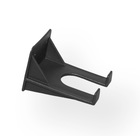Respiratory Injuries Part One
Unlock This Video Now for FREE
This video is normally available to paying customers.
You may unlock this video for FREE. Enter your email address for instant access AND to receive ongoing updates and special discounts related to this topic.
Exploring the Respiratory System
This guide delves into the structure and function of the respiratory system, highlighting common problems and effective airway management techniques, crucial for maintaining respiratory health.
Upper Airway Anatomy and Challenges
Understanding the upper respiratory system, including the nasopharynx and oropharynx, and challenges such as obstructions from foreign objects, swelling, or anaphylaxis.
Common Airway Obstructions
Potential obstructions in the airway include:
- False teeth or milk teeth.
- Swelling due to burns, heat, or allergic reactions.
- Obstructions like polyps in the nasal cavities.
Airway-Opening Techniques
Techniques to open the airway, crucial for breathing:
- Head tilt/chin lift and jaw thrust maneuvers.
- Methods to lift the tongue and clear the throat.
Understanding the Trachea and Oesophagus
The role of the trachea and oesophagus in breathing and eating, including their structure and the importance of cartilage.
Respiratory Mechanics
The process of breathing involves:
- Chest expansion and diaphragm movement creating a vacuum.
- Inhalation of air into the lungs and subsequent exhalation.
Preventing Aspirational Pneumonia
Importance of keeping the airway clear from fluids like vomit and blood to prevent conditions like aspirational pneumonia.
Oxygen Supplementation
In low oxygen environments, supplementation methods such as oxygen masks, airway devices, and supplemental oxygen are necessary.
_-Trauma_20x30_CE.jpg)






_-Trauma_10x10_CE.jpg)